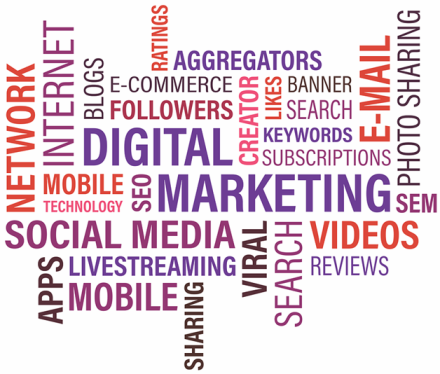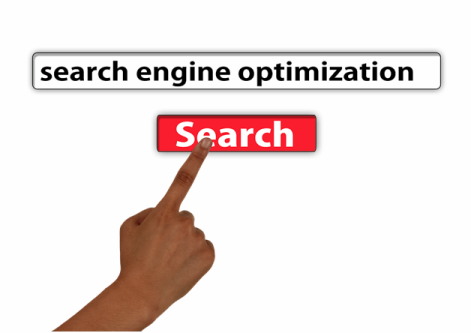Introduction:
In the dynamic realm of modern business, understanding the basics of digital marketing is not just an advantage; it’s a necessity. As technology continues to reshape the way companies connect with their audience, embracing digital marketing is key for success. This comprehensive guide is tailored for newcomers, offering insights into the fundamental concepts, strategies, and tools that constitute the backbone of digital marketing.
Section 1: Unveiling the Digital Marketing Landscape
1.1 What is Digital Marketing?
Digital marketing is an umbrella term encompassing various online strategies and channels to promote products, services, or brands. Unlike traditional marketing, digital marketing leverages the power of the internet and electronic devices to reach a global audience, engaging potential customers in a more targeted and measurable way.
1.2 The Evolution of Marketing in the Digital Age
As technology advanced, so did marketing strategies. From the early days of email campaigns to the rise of social media and search engine optimization, digital marketing has evolved significantly. The shift towards digital platforms enables businesses to connect with their target audience more efficiently, measure results, and adapt strategies in real-time.
Section 2: Core Components of Digital Marketing
2.1 Website Optimization: The Digital Foundation
A well-optimized website serves as the digital storefront for businesses. It should be user-friendly, mobile-responsive, and strategically designed to guide visitors towards desired actions. Website optimization is fundamental for effective digital marketing as it enhances user experience and supports various marketing efforts.
2.2 Content Marketing: The Power of Compelling Storytelling
Content marketing revolves around creating and distributing valuable, relevant, and consistent content to attract and retain a target audience. Whether through blog posts, videos, or infographics, compelling storytelling is at the core of content marketing, establishing businesses as authorities in their respective industries.
2.3 Search Engine Optimization (SEO): Enhancing Online Visibility
SEO is the practice of optimizing a website to rank higher on search engine results pages (SERPs). By incorporating relevant keywords, improving website structure, and earning high-quality backlinks, businesses increase their online visibility, attracting organic traffic and potential customers.
2.4 Social Media Marketing: Building Communities and Brand Presence
Social media platforms provide unparalleled opportunities for businesses to connect with their audience. Social media marketing involves creating and sharing content on platforms like Facebook, Instagram, Twitter, and LinkedIn to build brand awareness, foster engagement, and drive traffic to the website.
2.5 Email Marketing: Nurturing Customer Relationships
Email marketing remains a powerful tool for nurturing customer relationships. Through personalized and targeted emails, businesses can communicate directly with their audience, providing updates, promotions, and valuable content. Email marketing is effective for both customer retention and lead generation.
Section 3: Setting Goals and Key Performance Indicators (KPIs)
3.1 Defining Clear Objectives: The Importance of Goal Setting
Every digital marketing strategy should begin with clearly defined objectives. Whether the goal is to increase brand awareness, drive website traffic, or boost sales, having specific, measurable, achievable, relevant, and time-bound (SMART) goals sets the foundation for a successful digital marketing campaign.
3.2 Identifying Key Performance Indicators (KPIs): Measuring Success
Key performance indicators are metrics used to evaluate the success of a digital marketing campaign. From website traffic and conversion rates to social media engagement and email open rates, selecting relevant KPIs ensures businesses can track progress, identify areas for improvement, and make data-driven decisions.
Section 4: Digital Advertising: Paid Strategies for Visibility
4.1 Pay-Per-Click (PPC) Advertising: Targeted and Measurable Campaigns
PPC advertising allows businesses to place ads on search engines and pay a fee each time their ad is clicked. This targeted approach ensures that businesses only pay for actual visits to their website, making PPC an effective and measurable way to drive traffic and conversions.
4.2 Social Media Advertising: Amplifying Reach and Engagement
Social media platforms offer robust advertising options to businesses. From sponsored posts to targeted ads, social media advertising allows businesses to amplify their reach, target specific demographics, and engage with potential customers. Strategic ad campaigns on platforms like Facebook and Instagram can significantly impact brand visibility.
Section 5: Analytics and Data-Driven Decision Making
5.1 The Role of Analytics: Extracting Actionable Insights
Analytics tools, such as Google Analytics, provide businesses with valuable insights into the performance of their digital marketing efforts. From tracking website traffic to understanding user behavior, analytics tools offer a wealth of information that enables businesses to make informed decisions, refine strategies, and optimize campaigns for better results.
5.2 Continuous Improvement: Iterative Campaign Optimization
Digital marketing is an iterative process that requires continuous improvement. By regularly analyzing data, identifying trends, and experimenting with different strategies, businesses can optimize their campaigns for better performance. The agility to adapt based on insights is a hallmark of successful digital marketing.
Section 6: Embracing Trends and Emerging Technologies
6.1 Video Marketing: Engaging Audiences Visually
Video content has become a dominant force in digital marketing. From short-form videos on social media platforms to longer-form content on YouTube, video marketing allows businesses to engage audiences visually. It’s an effective way to convey messages, showcase products, and build a strong brand presence.
6.2 Artificial Intelligence (AI) and Chatbots: Enhancing Customer Interaction
AI and chatbots are revolutionizing customer interaction. Businesses can use chatbots on websites and social media platforms to provide instant responses to customer inquiries, streamline customer support, and personalize user experiences. Incorporating AI-driven insights also enhances the effectiveness of digital marketing campaigns.
Section 7: Creating a Consistent Brand Image
7.1 Branding in the Digital Space: Cohesive and Memorable Messaging
In the digital landscape, maintaining a consistent brand image is crucial. From the website’s design to social media posts and email communications, businesses should ensure that their branding elements – logos, color schemes, and messaging – are cohesive. Consistency builds brand recognition and fosters trust.
7.2 Online Reputation Management: Building Trust
Online reputation plays a pivotal role in digital marketing. Positive reviews, testimonials, and social proof contribute to building trust among potential customers. Conversely, addressing negative reviews promptly and transparently demonstrates a commitment to customer satisfaction, mitigating potential damage to the brand’s reputation.
Section 8: Compliance and Ethics in Digital Marketing
8.1 Ethical Considerations: Upholding Integrity
In the digital era, ethical considerations are paramount. Businesses should adhere to best practices and industry standards in their digital marketing efforts. Ensuring transparency, respecting user privacy, and avoiding deceptive practices are essential for building trust and maintaining a positive brand image.
8.2 Compliance with Regulations: Navigating Legal Frameworks
Digital marketing is subject to various regulations, such as data protection laws and advertising standards. Businesses must stay informed about the legal frameworks that govern digital marketing in their regions. Compliance not only protects businesses from legal consequences but also demonstrates a commitment to ethical practices.
Section 9: Building a Digital Marketing Strategy
9.1 Developing a Comprehensive Strategy: The Roadmap to Success
A successful digital marketing strategy requires careful planning and execution. Businesses should identify their target audience, define unique selling propositions, and tailor their approach based on the characteristics of their industry. A well-crafted strategy aligns digital marketing efforts with overarching business goals.
9.2 Budgeting for Digital Marketing: Allocating Resources Effectively
Budgeting is a critical aspect of digital marketing. Businesses should allocate resources strategically, considering the costs associated with various channels such as paid advertising, content creation, and analytics tools. A well-managed budget ensures a balanced and effective digital marketing campaign.
Section 10: Continuous Learning and Adaptation
10.1 Staying Informed: The Rapid Evolution of Digital Marketing
The digital marketing landscape is constantly evolving. New technologies, algorithms, and consumer behaviors shape the environment. To stay competitive, businesses and marketers must prioritize continuous learning. Following industry blogs, attending webinars, and participating in relevant courses ensures professionals stay abreast of emerging trends.
10.2 Adaptation to Change: Agility in the Digital Frontier
Adaptability is a hallmark of successful digital marketing. Businesses should be agile in responding to changes in algorithms, consumer preferences, and technology. Embracing change allows businesses to seize opportunities, stay ahead of competitors, and maintain a resilient digital presence.
Section 11: Conclusion
In conclusion, the basics of digital marketing form a foundation for businesses to thrive in the digital age. From website optimization and content marketing to paid advertising and analytics, understanding these fundamental concepts empowers newcomers to navigate the complex world of digital marketing. By embracing trends, prioritizing customer experience, and maintaining ethical standards, businesses can not only establish a robust online presence but also forge lasting connections with their target audience. In a landscape that rewards innovation and strategic thinking, mastering the basics of digital marketing is not just a skill; it’s a strategic imperative for sustained success and growth in the dynamic digital frontier.


